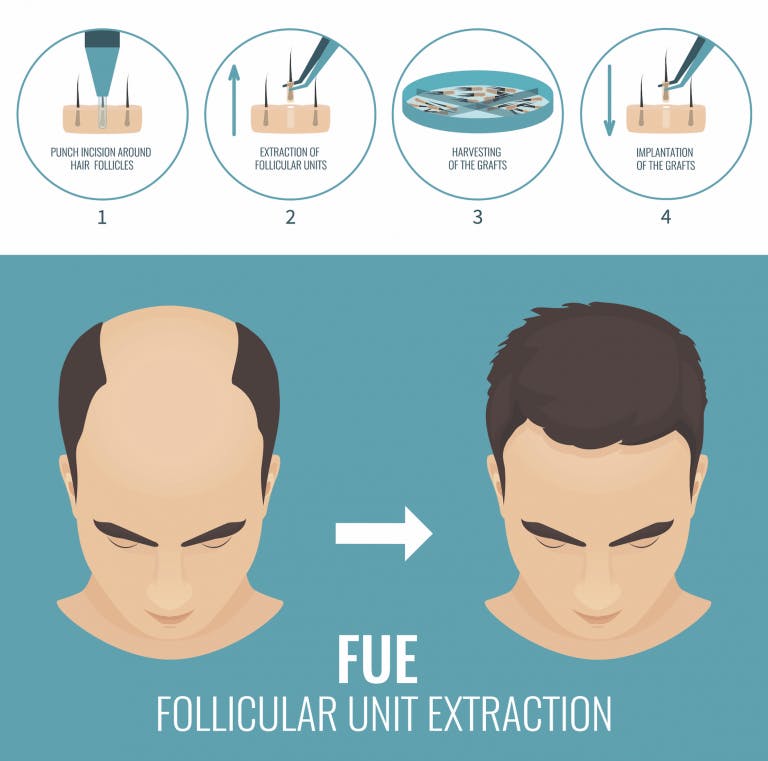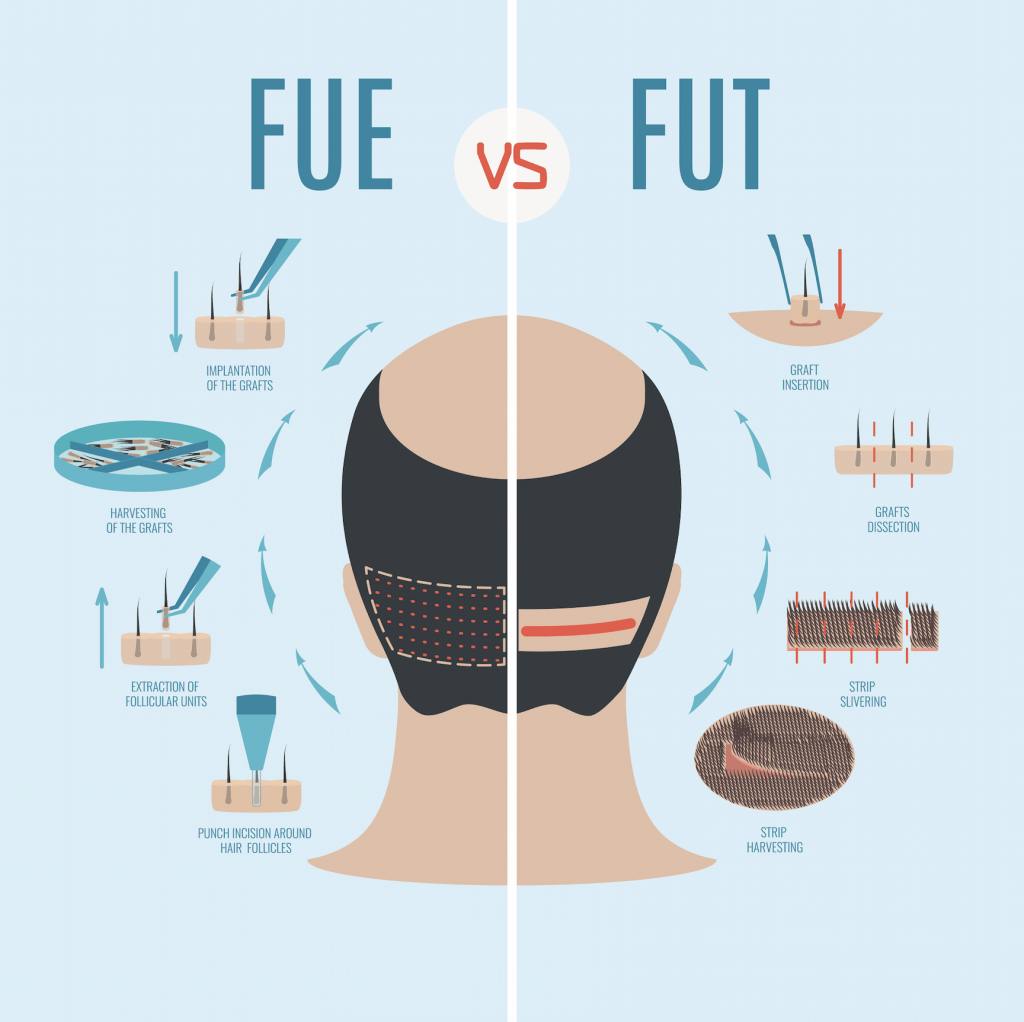Whether or not to attempt hair restoration through a hair transplant is a big decision. Not only can it permanently alter your appearance, but it can also cost several thousands of dollars and may not yield the results you’re after.
FUE Hair Transplant: What You Need To Know
8 Min Read

Get hair, health, and science news delivered right to your inbox.
Fortunately, you have options when it comes to getting a hair transplant, and the decisions you make can determine how happy you’ll be with the outcome of your hair restoration. One of the biggest questions to answer is whether you should get a follicular unit extraction(FUE) hair transplant or follicular unit transplantation (FUT) hair transplant. Though each involves moving hair follicles from one area of the scalp to another, they do so in different ways, with different costs, recovery time and results.
In this article, we’re going to explore follicular unit extraction or FUE transplant.

What is an FUE hair transplant?
A follicular unit extraction, also known as anFUE transplant or FUE procedure, is a type of surgery in which hair follicles are removed from a donor area of the scalp and moved to an area of the scalp where hair loss is affecting the patient. The donor area carries that name because with hair transplants, every patient is his or her own hair donor; donations from another person would be too easily rejected by the recipient’s body. Usually, the donor area for anFUE hair restoration procedure is located at the back of sides of the scalp, where hair loss is less common and there are hair follicles to spare.
During a follicular unit extraction or FUE procedure, the hair on the scalp must be cut short so that it is easier to find and remove the follicular units for transplantation. Next, a physician uses a small instrument to extract individual follicular units (a hair follicle and tiny amount of tissue and skin, together known as a graft) from areas of the scalp with a higher volume of hair. The grafts are then prepared to be reinserted into parts of the scalp where baldness or less severe hair loss is occurring.
Minuscule incisions are then put in the scalp where the follicular units or grafts are to be transplanted. The grafts are then placed individually into these little incisions, with special care to maintain a natural look.
The incisions from the transplant of the follicular units will heal within a few days of theFUE procedure. The hair usually falls out of the follicular units within a week or two as the grafts reset and prepare to grow hair in their new location. Within three months, new growth begins and after another three months, hair restoration is complete and the transplanted hair should be growing in a way that appears natural with the surrounding hair.

What is the difference between FUE and FUT hair transplants?
With FUE hair restoration, the follicular units are harvested individually so that it’s nearly impossible to tell where the hair was removed from the donor area.
With a FUT procedure, the hair does not always need to be trimmed prior to the procedure, and the follicular units are removed from one or more donor areas on the scalp in a small strip. After the follicular units have been removed, they are then separated into smaller grafts to be transplanted to areas with hair loss. The surgery requires stitches where the follicular units were removed, and it leaves a scar that is visible unless the patient wears their hair at a longer length to cover it. The recovery time is also longer than it is with a FUE hair transplant, sometimes taking a couple of weeks before the incisions have healed. However, the procedure takes less time to perform than aFUE surgery and usually costs less as well.
How much does an FUE hair transplant cost?
A FUE hair transplant costs thousands of dollars, but the exact cost can vary widely between providers, especially because every patient’s hair restoration needs are different. For example, the number of follicular units needed can vary, and sometimes more than one procedure is required to achieve the desired result. It’s best to contact several providers to get an estimate of whatFUE hair transplant will cost for your particular situation, and many offer free consultations.
What are the alternatives to an FUE hair transplant?
While FUE procedure can offer hair restoration, it can be very costly and isn’t for everyone. But there are other ways to support healthy hair growth and improve the appearance of your hair. You can also try supporting your body’s capacity to grow hair from within by taking a hair health supplement.